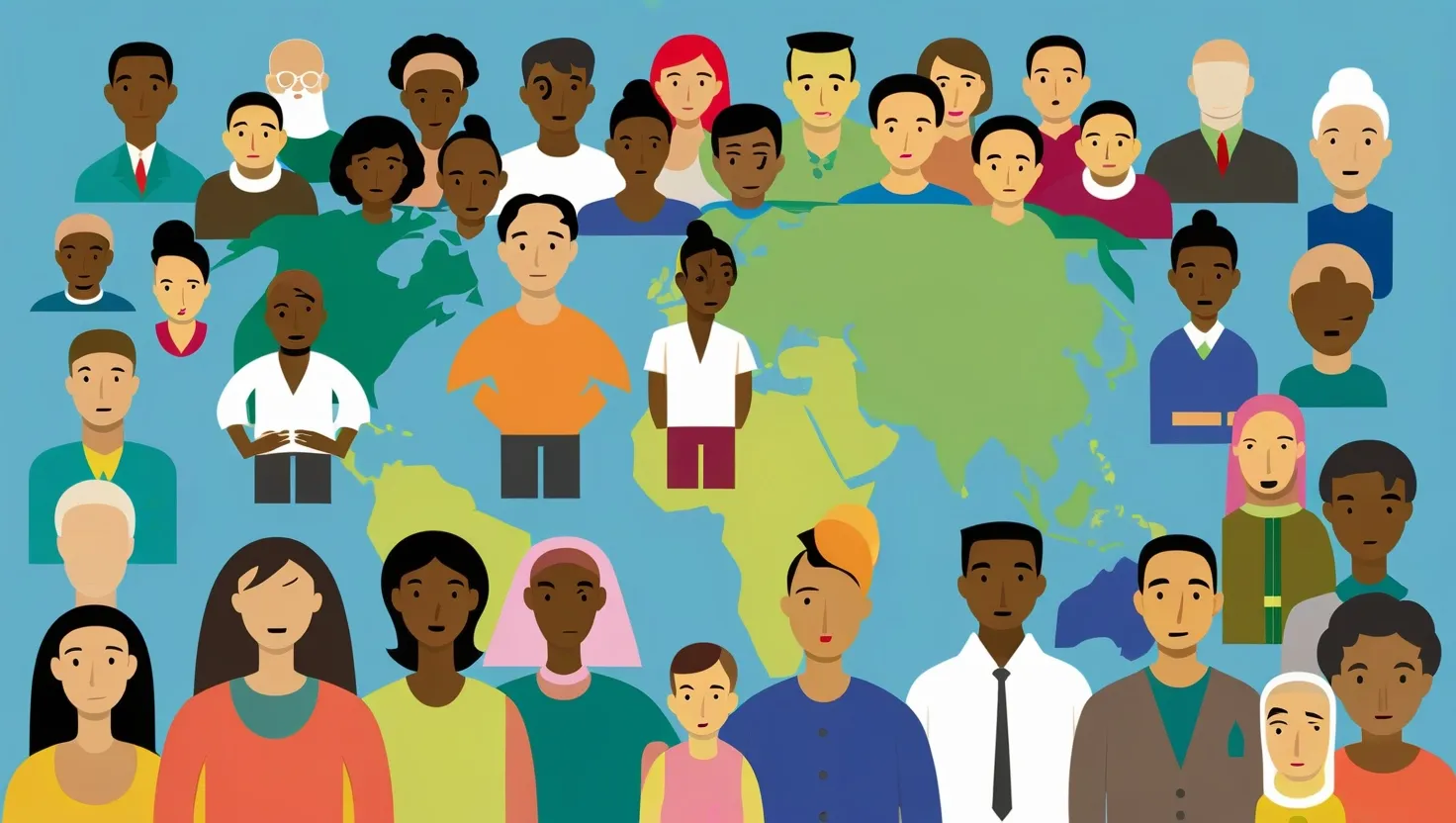As we stand at the threshold of a new era, the world is undergoing a series of demographic shifts that are reshaping the very fabric of our economies, social systems, and political landscapes. These changes are not just statistical trends; they are lived experiences that will define the future of our global community.
Aging Populations in Developed Countries
In many developed nations, the population is aging at an unprecedented rate. This demographic shift is not just a matter of numbers; it has profound implications for economic growth, healthcare systems, and pension funds. As populations age, the workforce shrinks, leading to slower economic growth. The labor force, once the backbone of economic productivity, is now facing a significant decline in participation rates.
“The first rule of any technology used in a business is that automation applied to an efficient operation will magnify the efficiency. The second is that automation applied to an inefficient operation will magnify the inefficiency.” - Bill Gates
This quote, though not directly about demographics, highlights the importance of efficiency in the face of change. In the context of aging populations, efficiency in healthcare and pension systems becomes crucial. For instance, Japan, which has been at the forefront of this demographic shift, is experiencing its first population decline since 2011. This has led to a significant increase in the elderly population and a corresponding decline in the working-age population.
The economic implications are stark. Slower labor force growth weighs heavily on long-run economic growth, affecting GDP and national income. However, there is a silver lining: an aging population can also lead to higher capital per worker, boosting wages and productivity. But this depends on how well public policy adjusts to these new demographic realities.
Youth Bulge in Emerging Economies
While developed countries grapple with aging populations, many emerging economies are facing a different challenge – the youth bulge. This phenomenon, where a large proportion of the population is under the age of 25, presents both opportunities and challenges.
“The youth of today are the leaders of tomorrow.” - Nelson Mandela
In countries like India and many African nations, the youth bulge is a double-edged sword. On one hand, it offers a demographic dividend – a period where the working-age population is larger than the dependent population, potentially leading to rapid economic growth. On the other hand, it poses significant challenges in terms of employment, education, and social stability.
The key to harnessing this demographic dividend lies in investing in education and job creation. If managed well, the youth bulge can drive economic growth and innovation. However, if left unaddressed, it can lead to unemployment, social unrest, and even political instability.
Urbanization and Megacity Growth
Urbanization is another demographic shift that is transforming economies around the world. As people move from rural areas to cities, megacities are emerging as economic powerhouses. These urban centers are hubs of innovation, entrepreneurship, and economic activity.
“Cities are the engines of economic growth, but they are also the places where the challenges of economic development are most apparent.” - Jane Jacobs
Urbanization brings numerous benefits, including increased economic opportunities, better access to education and healthcare, and a higher standard of living. However, it also poses significant challenges such as overcrowding, pollution, and inequality.
Megacities like Tokyo, New York, and Mumbai are not just economic hubs; they are also cultural melting pots. They attract talent from around the world, fostering innovation and creativity. But they also strain local resources, requiring innovative solutions to manage growth sustainably.
Declining Birth Rates and Labor Force Implications
Declining birth rates are a global phenomenon, affecting both developed and developing countries. This trend has significant implications for labor markets and economic growth.
“The only thing necessary for the triumph of evil is for good men to do nothing.” - Edmund Burke
While this quote is more about moral action, it highlights the need for proactive policy responses to demographic changes. Declining birth rates mean fewer young people entering the workforce, which can lead to labor shortages and slower economic growth.
However, declining birth rates also offer an opportunity to focus on quality over quantity. With fewer children to support, families can invest more in each child’s education and healthcare, potentially leading to a more skilled and healthier workforce.
International Migration Patterns
International migration is another demographic shift that is reshaping economies. As people move from one country to another in search of better opportunities, they bring with them new skills, ideas, and perspectives.
“Diversity is the art of thinking independently together.” - Malcolm Forbes
Migration can be a boon for economies, filling labor gaps and bringing in fresh talent. However, it also poses challenges such as cultural integration and social cohesion.
Policy responses to migration are critical. Immigration reforms can help manage the flow of migrants, ensuring that they contribute to the economy while also integrating into the society. Social welfare adjustments can also help in supporting both the migrants and the local population.
Challenges and Opportunities
These demographic shifts present a mix of challenges and opportunities. In healthcare, for instance, aging populations require more specialized care, while youth bulges demand preventive healthcare and education.
“Pension funds, endowments, and institutional investors have a lot of money to invest, and they are looking for places to put it.” - Peter Lynch
Pension systems are under strain due to aging populations, requiring innovative solutions such as increasing the retirement age or encouraging private savings. Labor markets need to adapt to declining birth rates and aging workforces by promoting lifelong learning and flexible work arrangements.
Policy Responses
Policy responses are crucial in managing these demographic shifts. Immigration reforms can help fill labor gaps, while social welfare adjustments can support both the elderly and the young.
“The best way to predict the future is to invent it.” - Alan Kay
Governments need to be proactive in addressing these demographic changes. Investing in education and healthcare, promoting flexible work arrangements, and adjusting pension systems are just a few of the strategies that can help mitigate the challenges and capitalize on the opportunities.
Long-term Effects
The long-term effects of these demographic shifts will be profound. They will redefine global economic power dynamics and intergenerational equity.
“The future belongs to those who believe in the beauty of their dreams.” - Eleanor Roosevelt
As developed countries age, emerging economies with younger populations may rise to prominence. This shift could lead to a more balanced global economy, but it also raises questions about intergenerational equity. How will we ensure that the benefits of economic growth are shared fairly across different age groups?
Conclusion
The world is at a crossroads, facing demographic shifts that are both transformative and challenging. As we navigate these changes, it is crucial to adopt a forward-thinking approach, one that harnesses the opportunities while addressing the challenges.
“The greatest glory in living lies not in never falling, but in rising every time we fall.” - Nelson Mandela
By understanding these demographic shifts and their implications, we can create policies that support economic growth, social stability, and intergenerational equity. The future is not set in stone; it is a canvas waiting to be painted with the colors of our collective imagination and action.






